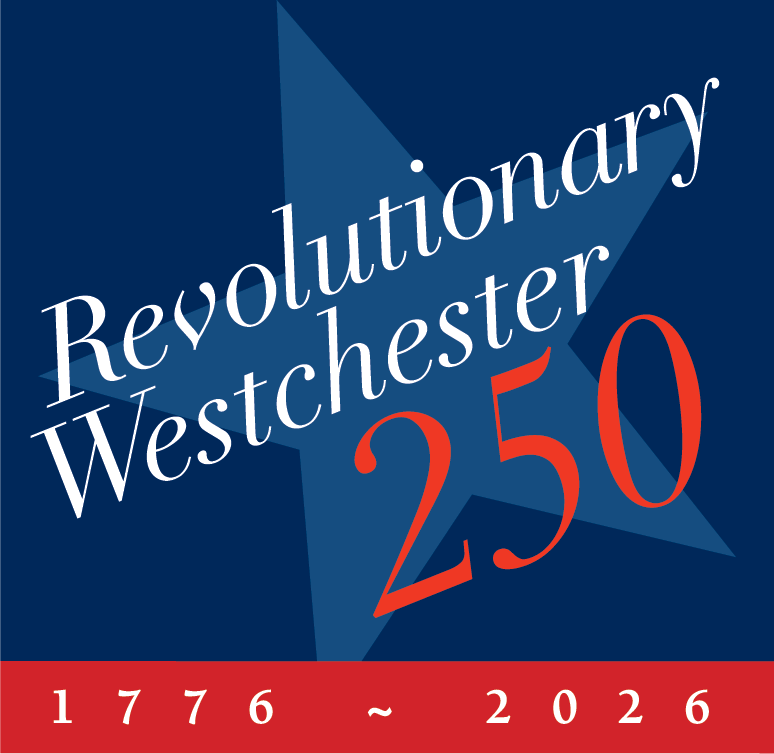Videos
Our growing YouTube channel is filled with a wide range of video content, from short films we’ve produced about the Revolutionary War in Westchester to presentations, book discussions and speeches. Below are our two popular series, Explore Westchester County’s Revolutionary War Places and Revolutionary People: Patriots & Loyalists.
Explore Westchester County’s Revolutionary War Places
Explore the fascinating history of five special sites across Westchester County: Verplanck’s Point, Philipse Manor Hall, Tarrytown’s Patriots Park, the village of Bedford, and Odell House Rochambeau Headquarters.
VERPLANCK’S POINT
Verplanck’s Point was a key crossing during the Revolutionary War and the site of American and French encampments. The combined forces of Washington and Rochambeau crossed here on the march to defeat the British at Yorktown, Virginia.
PHILIPSE MANOR HALL
Philipse Manor was the home of the Loyalist Philipse family, who were granted 52,000 acres along the Hudson River by the British Crown. It was here that British General Sir Henry Clinton wrote what is known as the Philipsburg Proclamation, which declared that all enslaved persons of Patriots—but not those of Loyalists—were freed.
PATRIOTS PARK
Located in Tarrytown, this park has a statue honoring the three patriots who captured British Major John André, in a pivotal event of the war. Alone and on horseback, André was attempting to get back to British-occupied New York City. Hidden in his boots were plans for the fortifications at West Point, given to André by the traitorous American General, Benedict Arnold.
THE BURNING OF BEDFORD
The village of Bedford lay between the British and American lines and was, like much of Westchester, a disputed and dangerous territory. However, on July 11, 1779, the entire village, with the exception of one house, was burned by 400 horsemen under the command of Lt. Col. Samuel Birch. Today, all that stands around the original village green was built in the years after the Revolution.
ODELL HOUSE ROCHAMBEAU HEADQUARTERS
One of the most important decisions in American military history was made in this house in Greenburgh in 1781 when it was serving as the headquarters for French General Comte de Rochambeau. At a meeting with General George Washington, the two men made the crucial decision to march their combined armies to Yorktown, Virginia.
This series was created by Constance M. Kehoe, Erik Weiselberg, Ph.D and other talented consultants and volunteers for Revolutionary Westchester 250.
The production was funded by Westchester County.
Revolutionary People: Patriots & Loyalists
In just under three-and-a-half minutes each, these upbeat, family-friendly videos capture—with a bit of whimsical humor—the historic contributions of an entrepreneurial woman loyalist and a young patriot officer. Each video tells an engaging and infrequently told story associated with Westchester County’s significant role in the Revolutionary War.
MOLLIE DOBBS SNEDEN
Mollie Dobbs Sneden operated a family-run ferry service across the Hudson River from Dobbs Ferry to what became known as Sneden’s Landing in Rockland County prior to and following the American Revolution.
CAPTAIN GEORGE HURLBUT
Captain George Hurlbut of New London who was serving in the Continental Army at Dobbs Ferry during 1781. The sound of cannon and musket fire was heard along the Hudson River and the young veteran of the Battle of Bunker Hill, soon became engaged in a military action against the British near and on the Hudson at Tarrytown, alongside French soldiers who were allies of the Patriots. The successful cooperation between French and Continental troops foreshadowed the joint allied operation at the Battle of Yorktown, Virginia.
These videos were produced by Nader Sadre and Skylar Apter.
With the cooperation of the Broadway Training Center in Hastings-on-Hudson, New York, two talented pre-teen members and one teenage member from Westchester communities are featured in the videos.
The historical integrity of the stories was supervised by Dr. Erik Weiselberg, Irvington’s village historian and the principal historian of RW250 as well as a social studies teacher at Irvington High School.
RW250 received a competitive grant for this series from The Greenway Heritage Conservancy HRV, Inc., a nonprofit established by New York State in the 1991 Greenway Act as the management entity for the Hudson River Valley National Heritage Area.

